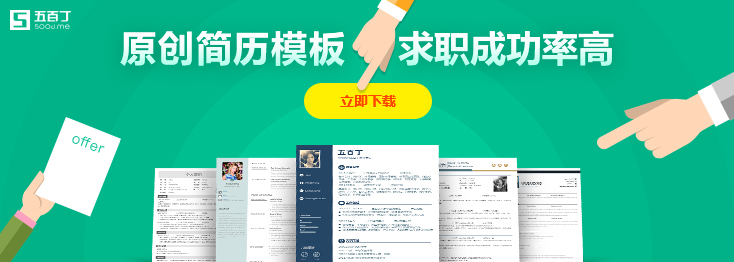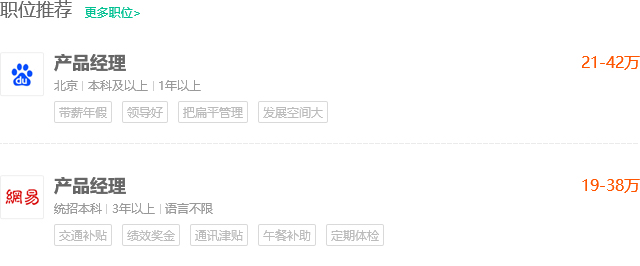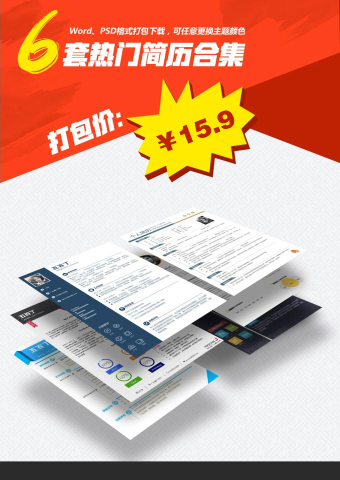
最重要的会计科目(上):收入确认新准则IFRS15
译者注:本文译自ACCA-P2最新(2015年9月)两篇文章《Revenue revisited》。收入可以说是最重要的会计科目,收入确认准则无疑也是极其重要的,影响深远的(对ACCA考试至少是F7F8P2P7)。
因为文章很长,且用词重复多,为方便阅读理解,译者对原文进行了改编和一些简化,比如:Financial Statements=FS; Standard=Std; Goodor Service = G/S简译“商务”,with=w/,without=w/o, management=mgt, 不解释IASB、FASB等会计人士默认熟悉的组织。同时,在翻译过程中,译者参考了专业组织文献如《德勤会计聚焦》等,并从中摘选了一些图片。

背景介绍
On 28 May 2014, IASB, as a result of the joint project w/ FASB, issued IFRS 15, Revenue from Contracts w/ Customers. Application of IFRS15 is mandatory for annual reporting periods starting from 1Jan 2017 (though there is currently a proposal to defer to 1 Jan 2018)& earlier application is permitted.
IASB和FASB曾发起联合项目,统一收入准则。2014年5月,IASAB发布《IFRS15-与客户合同产生的收入》(FASB发布《Topic606》)。IFRS15适用于2017年1月1日及以后各期年报(有提议推迟到2018年1月实施),允许提前采用。
In line w/ ACCA’s established rule,accounting stds issued by 1 Sept in a given year are examinable from 1Sept in the following year, so IFRS15 are examinable in P2 from Sept 2015.
据ACCA既定规则,当年9月1日前颁布的会计准则纳入次年9月起的考试范围。FRS15适用于P2自2015年9月起的考试。【译者注:P2 1509+1512合并真题的Q4的全部是IFRS15.】
最近考试真题
Historically, there has been a significant divergence in practice over the recognition of revenue, mainly because IFRS have contained limited guidance in certain areas. The original IAS18, Revenue,was issued in 1982 w/ a significant revision in 1993, however, IAS18 was not fit for purpose in today’s corporate world as the guidance available was difficult to apply to many transactions. The result was that some companies applied US GAAP when it suited their needs.
会计实务对收入确认一直存在很大分歧。IFRS确认方法相当有限(译者注:美国GAAP相对繁琐,这也是IFRS和GAAP并轨四大剩余项目之一)。1982年颁布(1993年曾有修订)的准则IAS18已不适应现在的复杂交易。有些公司根据自身需要采用美国的通用会计准则。
Users often found it difficult to understand the judgments & estimates made by an entity in recognising revenue, partly because of the ‘boilerplate’ nature of the disclosures. As a result of the varying recognition practices, the nature & extent of the impact of IFRS15 will vary between entities & industries. For many transactions, such as those in retail, IFRS15 will have little effect but there could be significant change to current practice in accounting for long-term & multiple-element contracts.
因为财报披露采用一刀切的标准格式, 财报使用者常常难以看懂企业确认收入使用的判断和估计。鉴于实务差异很大,新准则对不同企业和行业的影响也将不尽相同,比如对零售业几乎没影响,而对长期和多要素合同的会计处理则影响巨大。
IFRS 15 replaces the following stds & interpretations:IFRS15生效后,以下准则和解释将被取代:
IAS11,Construction Contracts国际会计准则第11号 建造合同
IAS18,Revenue国际会计准则第18号 收入
IFRIC13,Customer Loyalty Programs国际财务报告解释公告第13号客户忠诚度计划
IFRIC15,Agreements for the Construction of Real Estate国际财务报告解释公告第15号房地产建造协议
IFRIC18,Transfer of Assets from Customers国际财务报告解释公告第18号客户转让资产
SIC31,Revenue – Barter Transactions Involving Advertising Services解释公告第31号收入:涉及广告服务的易货交易
One effect of this for the ACCA exams is that construction contracts are no longer an excluded topic in P2. 从此,建筑合同将成为P2考试内容

第一部分 新准则应用5步法
The core principle of IFRS15 is that an entity shall recognise revenue from the transfer of promised G/S to customer sat an amount that reflects the consideration to which the entity expects to be entitled in exchange for G/Ss. IFRS15 introduces a 5-step model to recognize revenue.The model applies to revenue earned from a contract with a customer with limited exceptions, regardless of the type of revenue transaction or the industry.
IFRS15核心原则是: 企业向客户转让商务时确认收入,确认的金额应反映主体因交付该商务而有权获得的金额。企业确认收入时遵循5步法, 不分具体交易或行业,少有例外。
1、Identify contract with customer. Contracts may bein different forms (written, verbal or implied), but must be enforceable, have commercial substance & be approved by the parties to the contract. The model applies once the payment terms for G/S are identified & it is probable that the entity will collect the consideration. Each party’s rights related to G/S have to be capable of identification. If a contract with a customer does not meet these criteria, the entity can continually reassess the contract to determine whether it subsequently meets the criteria.
2、or more contracts that are entered into around the same time with the same customer may be combined & accounted foras a single contract, if they meet the specified criteria. IFRS15 provid esdetailed requirements for contract modifications. A modification may be accounted for as a separate contract or as a modification of the original contract, depending on the circumstances.
步骤1:识别客户合同:形式上无论是书面,口头还是默认协议,该合同必须是可强制执行的,有商业实质的而且被各方批准的;明确商务并且认定对应收款是“高度可能(PROBABLE)”之后,准则适用;合同各方对商务的权利必须明确;形式多份但实质为一份合同的,在满足特定标准时,可合并处理;IFRS15还规定了合同修改的会计处理(合同的修订,在不同的情形和条件下,有些会被认定为一份单独的合同,有些会被认定为对原始合同的修订。)

2.Identify separate Performance Obligations (PO), often referred to as unbundling & isdone at the beginning of a contract. The key factor in identifying a separate PO is the distinctiveness of G/S, or abundle of G/S. A G/S is distinct if the customer can benefit from G/S on itsown or together with other readily available resources & it is separately identifiable from other elements of the contract. A series of distinct G/S thatare substantially the same with the same pattern of transfer, are regarded as a single PO. A G/S delivered may notbe distinct if it cannot be used w/o another G/S not yet delivered. Similarly,G/Ss that are not distinct should be combined with other G/S until the entity identifies a bundle of G/S that is distinct. IFRS15 provides indicators NOT criteria to determine the distinctiveness in the contract. This allows management to apply judgment to determine the Separate POs that best reflect the economic substance of a transaction.
步骤2:识别合同中的单独履约义务(或称“分类交易”)。重要判断因素是商务的“明确区分性”(或者说他们可以“归类打包”)。明确区分是说商务可以单独(或结合客户已有资源)使用使客户受益;换个说法,如果必须等其他商务交付后才能产生价值,那这个商务就没明确区分(它自身的交付也不构成履约义务)。如果符合特定标准,IFRS15要求将一系列可明确区分的同类商务视为单一履约义务。IFRS15提供(建议性)指标,而不是(硬性)标准,所以需要企业管理层判断来决定具体合同的单独履约义务,更好地反映交易的经济实质。
3. Determine the transaction price, the amount of consideration that an entity expects to be entitled to exchange the promised G/S. This amount excludes amounts collected on behalf of a 3rd party, e.g. government taxes. An entity must determine the amount of consideration to which it expects to be entitled to recognise revenue.
步骤3:确定交易价格,指因交付该商务而有权获得的金额。该价格不包括代表第三方所收金额,比如税金。
The price might include variable orcontingent consideration. Variable consideration(VC) should be estimated as either the expected value(EV) or the most likely amount. The EV approach represents the sum of probability-weighted amounts for various possible outcomes. The most likely amount represents the most likely amount in a range of possible amounts. Mgt should use the approach that will best predict the amount of consideration & apply consistently throughout the contract. An entity can only include VC in the price to the extent that it is highly probable that a subsequent change in the estimated VC will not result in a significant revenue reversal. If it is not appropriate to includeall of the VC in the price, the entity should assess whether it should includepart of the VC. However, this latter amount still has to pass the revenue reversaltest.VCis wider than simply contingent consideration as it includes any amount that is variable under a contract, such as performance bonuses or penalties.
交易价格可以是固定金额,也可以是可变对价(VC)或者或有对价。可变对价要用期望值法(EV)或最可能的金额为基础来估计。管理层需要采用最佳估计方法并在合同期间自始至终使用。仅在预期“高度肯定”估计金额的后续变动不会导致重大收入转回的情况下,可变对价才应纳入交易价格。可变对价要比或有对价范围广,它可以包括诸如业绩奖金或惩罚等所有合同项下的可变金额。
Additionally, an entity should estimate theprice, considering non-cash consideration ,consideration payable to the customer & the time value of money if a significant financing component is present. The latter is not required if the time period between thetransfer of G/S & payment is less than 1 year.
另外,企业在确定交易价格时,还要考虑非现金对价,任何应付给客户的对价以及货币时间价值(如果有重要融资成分)等因素。时间价值仅在转移商务和付款间隔期间大于一年时适用。
In some cases, it will be clear that asignificant financing component exists due to the terms of the arrangement. In other cases, it’s difficult to determine whether a significant financing component exists. This is likely when there are long-term arrangements with multiple performance obligations(PO) such that G/Ss are delivered & cash payments received throughout the arrangement. E.g., if an advance payment is required for business purposes toobtain a longer-term contract, then the entity may conclude that a significant financing obligation does not exist.
融资成分是否存在可能难以判断,特别是在长期合同中有多个履约义务存在的时候。比如,如果为取得一个长期业务合同而支付一笔预付款,企业可以认为不存在融资成分。
If an entity anticipates that it may ultimately accept an amount lower than that initially promised in the contract due to, e.g. past experience ofdiscounts given, then revenue would be estimated at the lower amount with the collectability of that lower amount being assessed. Subsequently, if revenue already recognised is not collectable, impairment losses should be taken to profit or loss.
如果企业预期最终收款金额少于最初约定(可能因为折扣),收入就根据较低金额的可回收程度来估计;如果后期出现坏账,损失进入损益表。
4. Allocate transaction price to separate POs, based on relative standalone selling prices of G/S promised & is made at the inception of the contract. It is not adjusted to reflect subsequent changes in the standalone selling prices of those G/Ss.
步骤4:将交易价格分摊至单独履约义务(基于合同开始时确定的商务单独售价)。后续这些商务的单独售价的价格发生变化时,交易价格的分摊不作任何调整。
The best evidence of standalone selling priceis the observable price of a G/S when the entity sells that G/Sseparately. If that is not available, an estimate is made by using an approach that maximises the use of observable inputs – e.g., expected cost plus an appropriate margin or the assessment of market prices for similar G/S adjusted for entity-specific costs & margins or in limited circumstances a residual approach. The residual approach is different from the residual methodthat is used currently by some entities, such as software companies.
单独售价的最佳证据是企业在单独出售商务时的可观察价格。如果单独售价无法直接观察,企业就通过最大限度利用可观察输入值的方法来估计单独售价,比如预计成本加利润法,市场价格评估调整法,特定情形下的余值法。这里的余值法和现在一些企业(比如软件公司)使用的“残值法”不一样。
When a contract contains more than onedistinct PO, an entity should allocate the price to each distinct PO on the basis of the standalone selling price. Where the price includes a variable amount & discounts, it is necessary to establish whether these amounts relate to all or only some of the POs in the contract. Discounts & VC will typically be allocated proportionately to all of the POs in the contract.However, if certain conditions are met, they can be allocated to one or more separate POs.
如果一个合同包含多个可区分的的履约义务,交易价格应当基于单独售价分摊至不同的履约义务。如果交易价格包含可变金额和折扣,就必须判断这些是否与全部或部分履约义务相关;除非特别情形,折扣和可变对价一般按比例分摊。
This will be a major practical issue as it may require a separate calculation & allocation exercise to be performed for each contract. E.g. a mobile telephone contract typically bundles together the handset & network connection & IFRS15 will require their separation.
这将是实施IFRS15的一个重大实务问题,因为这需要针对每一项合同进行单独核算和分摊。比如,手机合同一般是手机和网络服务捆绑销售,而现在IFRS15要求分开核算。。。
5. Recognize revenue as each PO is satisfied. This differs from IAS18 where, e.g., revenue of goods is recognised when the significant risks & rewards of ownership are transferred. Anentity satisfies a PO by transferring control of a promised G/S to the customer, which could occur over time or at a point in time. The definition of control includes the ability to prevent others from directing the use of & obtaining the benefits from the asset.
步骤5:履行每项履约义务时确认收入。IAS18要求在商品所有权上的重大风险和报酬转移时确认收入。IFRS15要求在履约业务得到履行时确认收入 --- 控制权转移的时候,可以是一个时期也可以是一个时点。而控制权的定义包括“阻止他人主导使用以及获得资产收益的能力”
A PO is satisfied at a point in time unless it meets one of the following criteria, in which case, it is deemed to besatisfied over time:
The customer simultaneously receives & consumes the benefits provided by the entity’s performance as the entity performs.
The entity’s performance creates or enhances an asset that the customer controls as the asset is created or enhanced.
The entity’s performance does not create an asset with an alternativeuse to the entity & the entity has an enforceable right to payment for performance completed to date.
如果符合下列条件之一,则视为履约义务在一个时期内被履行(或控制权转移)
客户同时取得和消费(消耗)了企业提供的商务;
企业的履约创造或改良了客户在资产被创造或改良时就控制的资产(译者注:比如客户控制的在产品)
企业的履约没有创造一项可被企业用作他用的资产,以及企业具有迄今为止已完成履约部分而获得客户付款的的可执行权利。(或者说,企业合同的标的物只能被客户使用,而且企业按履约进度收款)
Revenue is recognised in line with the pattern of transfer. Whether an entity recognises revenue over the period during which it manufactures a product or on delivery to the customer will depend on the specific terms of the contract. If an entity does not satisfy its PO over time, it satisfies it at a point in time & revenue will be recognised when control is passed at that point in time. Factors that may indicate the passing of control include the present right to payment for the asset or the customer has legal title to the asset or the entity has transferred physical possession of the asset。
收入要根据控制权转移的方式来确认。企业应该根据具体的合同条款来决定是在制造产品的整个周期里还是在交付时确认收入。如果企业不是在一个期间履行义务,那就是在一个时点上履约,在控制权转移的时候确认收入。控制权转移的考虑指标包括:企业拥有收取针对资产的付款的现时权利;客户拥有资产的法定所有权;企业已经转移了对资产的实物占有。
As a consequence of the above, the timing of revenue recognition may change for some point-in-time transactions when the newstd is adopted.
采用新准则后,针对某些“特定时点“交易的收入确认时间可能会有所不同。
In addition to 5-step model, IFRS15 sets outhow to account for the incremental costs of obtaining a contract & the costs directly related to fulfilling a contract & provides guidance to assist entities in applying the model to licences, warranties,rights of return, principal-vs-agent considerations, options for additional G/S& breakage.
除收入确认五步骤外,新准则还涉及到取得合同的增量成本和与履行合同直接相关的成本方面的核算,并在以下领域确认收入提供指引:许可证,质保,(附带)退货权(销售),委托与代理方考虑事项,客户针对额外商务的选择权,客户未行使的权利(译者注:比如合约手机的通话时间或未使用完的固定流量)。
IFRS15 is a significant change from IAS18 & eventhough it provides more detailed application guidance, judgment will berequired in applying it because the use of estimates is more prevalent. For exampurposes, you should focus on understanding the principles of the 5-step model so that you can apply them to practical questions.
IFRS15,与IAS18相比,是个重大变化。尽管提供了更详细的应用指引,在应用过程中要大量使用估计与判断。从考试的角度,需要重点理解五步法的原理,并针对实际业务可以应用。

- 上一篇:美国教授如何看待中国研究博士生申请者?
- 下一篇:2016国考考试技巧(干货)!
资讯来源说明:本文章来自网络收集,如侵犯了你的权益,请联系QQ:850873385进行删除。
相关推荐
Copyright © 2014-2018 500d.me. All Rights Reserved.
















